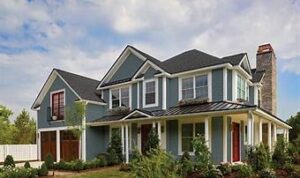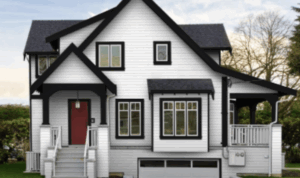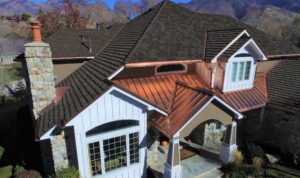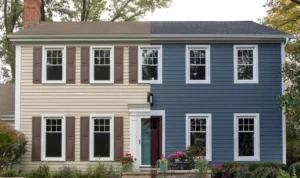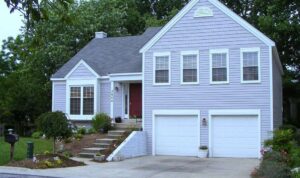Embark on a journey into the world of Hardie Cobblestone, a versatile material that adds charm and character to various architectural projects. From its composition to installation and design possibilities, discover everything you need to know about this unique building material.
As we delve deeper into the intricacies of Hardie Cobblestone, you'll uncover its benefits, maintenance tips, and design inspirations that will inspire your next construction endeavor.
Overview of Hardie Cobblestone
Hardie Cobblestone is a type of construction material made from fiber cement, which is a composite material composed of sand, cement, and cellulose fibers. This combination results in a durable and versatile product that is suitable for various architectural applications.One of the main benefits of using Hardie Cobblestone in construction projects is its durability and resistance to elements such as moisture, rot, and pests.
This makes it an ideal choice for exterior cladding, siding, and accent features in both residential and commercial buildings. Additionally, Hardie Cobblestone is low maintenance, fire-resistant, and can be painted to achieve different aesthetic looks.
Common Uses of Hardie Cobblestone
Hardie Cobblestone is commonly used in architectural designs to add texture and visual interest to building facades. Some examples of where Hardie Cobblestone is commonly used include:
- Exterior walls and siding
- Fireplace surrounds
- Columns and pillars
- Accent walls and entryways
Installation Process
Installing Hardie Cobblestone can be a great way to enhance the look of your outdoor space. Follow these steps for a smooth installation process.
Gather Tools and Materials
Before starting the installation, make sure you have the following tools and materials ready:
- Hardie Cobblestone pavers
- Gravel base
- Sand
- Hand tamper
- Masonry saw
- Rubber mallet
- Level
- Work gloves
Prepare the Area
- Begin by clearing the area where you will be installing the Hardie Cobblestone.
- Dig out the area to the desired depth, making sure to create a slight slope for proper drainage.
- Compact the soil and add a layer of gravel for the base.
Lay the Cobblestones
- Start laying the cobblestones from one corner of the area, working your way across.
- Use a rubber mallet to gently tap each cobblestone into place.
- Check for level periodically to ensure a smooth and even surface.
Fill the Joints
- Once all the cobblestones are in place, fill the joints with sand.
- Use a broom to sweep the sand into the joints, ensuring that they are completely filled.
- Compact the cobblestones once again to settle them into place.
Finishing Touches
- Add a final layer of sand over the cobblestones and sweep it into the joints.
- Use a hand tamper to compact the cobblestones one last time.
- Hose down the area to help settle the sand in the joints.
By following these steps and tips, you can ensure a successful installation of Hardie Cobblestone in your outdoor space.
Maintenance and Care
Proper maintenance is essential to ensure the longevity and appearance of Hardie Cobblestone. By following a few simple steps, you can keep your cobblestone looking great for years to come.
Regular Cleaning
- Regularly sweep or use a leaf blower to remove debris and dirt from the surface of the cobblestone.
- For tougher stains, use a mild detergent mixed with water and scrub the affected area with a soft brush.
- Rinse the cobblestone thoroughly with water to remove any soap residue.
Preventing Damage
- Avoid using harsh chemicals or high-pressure washers, as they can damage the surface of the cobblestone.
- Place furniture or heavy objects on protective pads to prevent scratching or indentations on the cobblestone.
- Trim vegetation around the cobblestone to prevent roots from growing underneath and causing damage.
Addressing Issues
- If you notice any cracks or chips in the cobblestone, repair them promptly using a suitable patching material recommended by the manufacturer.
- Inspect the joints between cobblestones for any signs of wear or erosion, and fill them in as needed to maintain structural integrity.
- If you encounter any major issues, consult a professional for guidance on how to properly address them.
Design Inspiration
When it comes to designing a space, Hardie Cobblestone offers a versatile and stylish option that can truly elevate the aesthetic appeal. Whether used for interior or exterior projects, this material brings a timeless charm and durability that can transform any area.
Exterior Design Ideas
- Create a stunning entryway by using Hardie Cobblestone for the facade of your house.
- Add character to your patio or outdoor kitchen by incorporating Hardie Cobblestone as a feature wall.
- Enhance your garden or landscaping by building retaining walls with Hardie Cobblestone.
Interior Design Ideas
- Bring a rustic charm to your living room by installing a Hardie Cobblestone fireplace surround.
- Add texture and visual interest to your kitchen by using Hardie Cobblestone as a backsplash.
- Create a cozy atmosphere in your bathroom by incorporating Hardie Cobblestone accents in the shower area.
Enhancing Aesthetic Appeal
Hardie Cobblestone's unique texture and earthy tones can add depth and warmth to any space. Whether used as a focal point or as a subtle accent, this material has the ability to enhance the overall aesthetic appeal of a room.
Creative Use in Design Projects
- Experiment with different patterns and layouts to create custom designs using Hardie Cobblestone.
- Combine Hardie Cobblestone with other materials like wood or metal to achieve a modern and eclectic look.
- Consider using Hardie Cobblestone in unexpected places, such as on ceilings or as part of furniture pieces, for a truly unique design element.
Conclusion
In conclusion, Hardie Cobblestone stands as a reliable and visually appealing choice for enhancing the aesthetics of any space. With proper care and creativity, this material can truly transform the look and feel of your architectural designs. Dive into the world of Hardie Cobblestone and unleash your imagination today.
Q&A
What is Hardie Cobblestone made of?
Hardie Cobblestone is primarily composed of cement, sand, and cellulose fibers, making it a durable and eco-friendly material for construction.
How can I ensure a smooth installation of Hardie Cobblestone?
To ensure a successful installation, it's crucial to prepare the surface properly, use the right tools, and follow the manufacturer's guidelines diligently.
What are some common maintenance issues with Hardie Cobblestone?
Common maintenance issues include mold growth, chipping, and discoloration. Regular cleaning and inspections can help prevent these issues and maintain the material's integrity.


